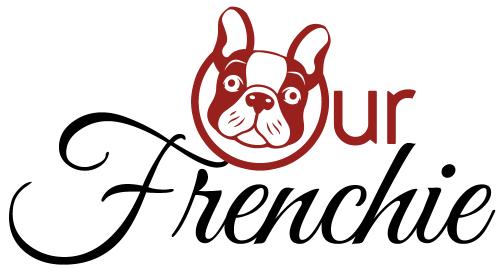Behavior
Identifying Body Language in Your Puppy: What Is Your Frenchie Trying to Say to You?
Page Contents
Your French Bulldog might not speak perfect English, but that doesn’t mean they can’t communicate with you! Dogs have their own way of speaking, from their barks to their stance to the way their ears are positioned. All you have to do as a pet owner is observe, listen, and respond to your dog’s wants and needs.
But how can you know what your Frenchie needs if they don’t have the power of speech? Keep reading to learn what your French Bulldog puppy might be trying to tell you.
The Ears
A Frenchie’s ears are one of the cutest parts of the body. But surprisingly, your dog’s ears may also tell you a lot about what they are thinking. It’s important to note that the flatter your dog’s ears are to the head, the more threatened your puppy feels. If their ears are pinned back, the dog is probably feeling nervous or anxious—maybe even angry. If the ears are more perky, on the other hand, your dog is feeling alert and perhaps even on guard. Finally, if the ears are extra floppy and relaxed, you can assume your dog is in a great mood.
The Mouth
When dogs start using their voice, it’s usually not difficult to figure out what they’re feeling. Growling typically means your dog is experiencing fear or aggression. Whining indicates they want something—either food, attention, or a quick potty break. And, of course, a dog’s bark is like a language of its own.
Barking can mean a few different things, and it won’t be long before you’re translating your dog’s yelps. Low and loud barks typically happen when your dog means business—they’re probably feeling scared or aggressive. Shorter and higher-pitched barks, though, are more playful.
You can also learn something by looking at how many teeth your dog is showing. If your Frenchie is showing all of their teeth, they may feel threatened. If they are only showing some of their teeth—kind of like a doggy smile—they’re probably feeling happy and relaxed.
The Eyes
French Bulldogs have very expressive and downright adorable eyes. And sometimes their eyes are a key indicator of how they’re feeling, too. Squinty eyes mean your dog is feeling happy or relaxed. Wide-open eyes, however, can signify aggression. Sometimes your dog’s pupils may even dilate if they are feeling threatened. You should also keep an eye out for a dog showing the whites of their eyes, as that can signal distress.
Pay attention to how you approach eye contact with your dog, too. Just like with humans, regular eye contact is part of building a relationship. But don’t try to initiate a staring contest with your Frenchie. For some dogs, prolonged staring—especially if you’re not blinking—can come off as threatening.
The Tail
A wagging tail equals happiness, right? Not always! Dogs may wag their tail if they are feeling scared or nervous, too. To figure out whether your puppy’s tail wag is happy or anxious, look at how fast it’s moving. Quick tail wags—usually accompanied by signature booty shakes—mean your dog is probably in a great mood and ready to play! If the tail is moving slowly though, or pressed down tightly toward the ground, your Frenchie might be scared of something.
The Fur
Have you ever noticed a line of fur sticking up down in a line down your dog’s back? This reaction is known as piloerection, or “raised hackles.” Because Frenchies are a short-haired breed, it’s easier to tell when their hackles are raised. This is something that happens when your dog is feeling startled, scared, or maybe even a little excited. It might happen if your dog sees someone walking past your house, or if they encounter another dog on a walk.
The Whole Body
Your dog’s posture and behavior can also tell you more about their mood than words ever could. Playful behavior, for example, is easily noted by a “play bow,” which is similar to the Downward Dog position in yoga. Most dogs do this when they are feeling frisky and ready to play.
You can also learn a lot by looking at how your dog behaves in certain situations. In unfamiliar situations, you may notice that your dog sticks close by your side or cowers a bit. That is natural behavior for dogs who are not totally comfortable. On the other hand, dogs who are more social or confident might stand a bit taller.
The Importance of Speaking Your Puppy’s Language
Being able to detect how your dog is feeling—scared, relaxed, or threatened—can help you keep them safe in various situations. By paying attention to your dog’s behavior, you’ll also be better equipped to note when they are feeling ill and need medical attention. Educating yourself on signs of common ailments, like heartworm symptoms in puppies for example, can help you catch health issues before they become too serious.
Overall, the more you learn about your dog’s body language and behavior, the stronger your relationship becomes. And the closer you are, the better you’ll be able to keep your Frenchie safe, happy, and healthy.


